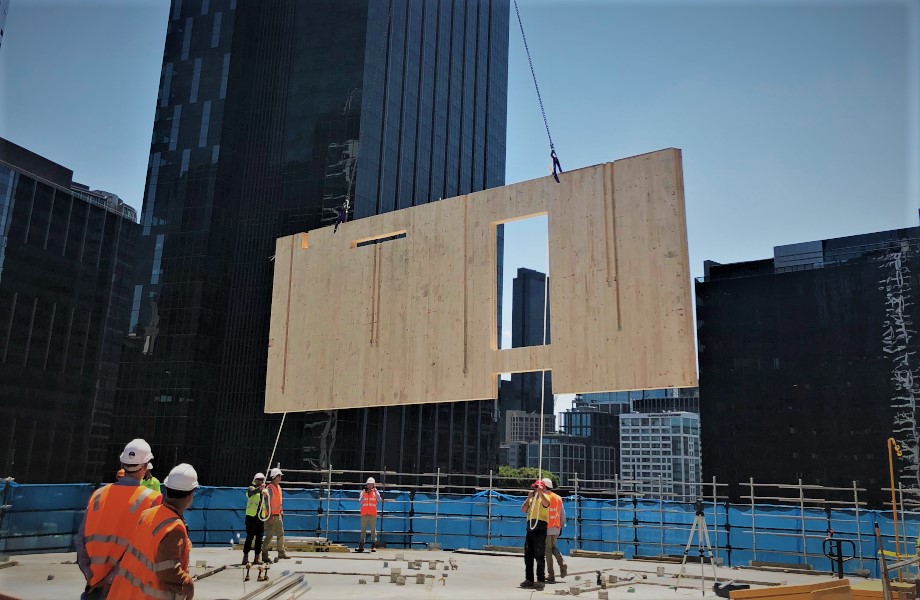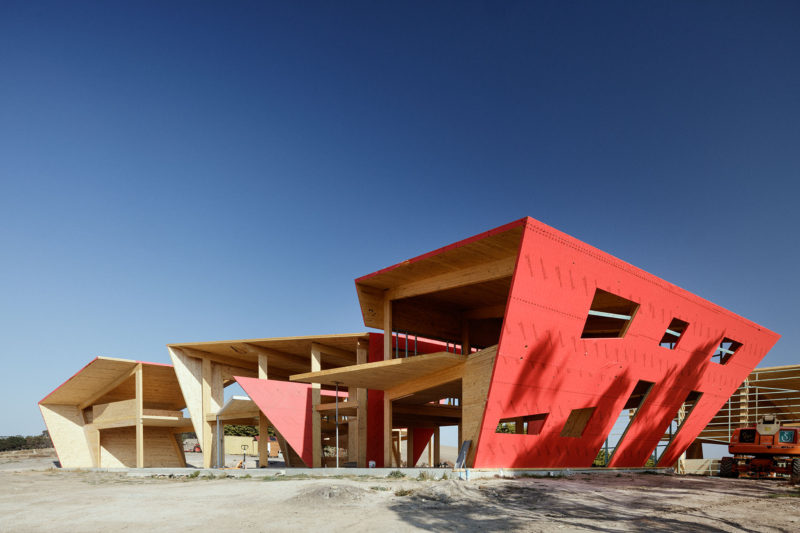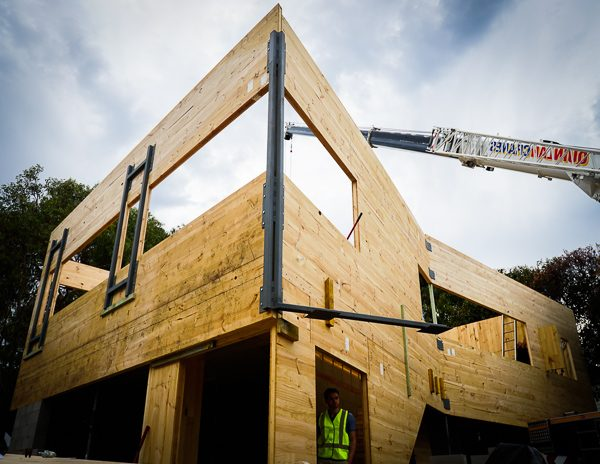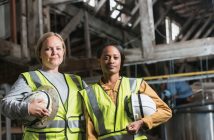The way projects are being delivered in Australia is rapidly changing with the emergence of mass timber, an environmentally friendly alternative to conventional structural systems

Mass timber encompasses a suite of building elements that transform relatively low value timber feedstock into structural elements that have superior weight-to-strength performance than steel or concrete.
In addition, they can harness prefabricated technologies and systems to deliver millimetre accurate elements to site. The most common forms of mass timber currently in use are cross laminated timber (CLT), glue laminated timber (Glulam or GLT) and laminated veneer lumber (LVL).
The increased pace of adoption of mass timber is being fuelled by the recent changes to national construction code (NCC). The NCC streamlined approvals for mass timber structures up to eight-storeys.
There has also been a dramatic expansion of supply options for mass timber products, as both local and international suppliers strive to increase their presence in the Australian market.
Vistek structural engineers have been key players responsible for significant milestones in the mass timber space. They provided the mass timber structural design for the first building made from Australian manufactured CLT, and also for the largest mass timber vertical extension in the world — Bates Smart’s 55 Southbank.
Vistek’s general manager Robbie Svars shared his thoughts on the future of mass timber in Australia, and the opportunities it opens up for local developers both large and small.
(An animation of the construction sequencing at 55 Southbank Vistek).
What do developers need to know about mass timber?
Simply put, mass timber has arrived. It is a bona fide alternative option to conventional building. It is available to all scales of projects and, with proper planning, mass timber can deliver better commercial outcomes than conventional builds.
The cornerstone to this has been the opening of XLam’s CLT plant in Wodonga, near the border of Victoria and New South Wales. This plant is the equal of anything in Europe and has the capacity to supply the market with large volumes of high quality CLT.
The flow on effect of this is that major European players such as KLH and Stora Enso (and Glulam suppliers like Hess and Rubner) now have a solid business case for developing their presence locally to support Australian projects. This means Australian projects can have the assurance of several sources of CLT, as well as a genuinely competitive market place.
However, supply alone is not enough. Developers need a whole ecosystem to support the delivery of mass timber projects. This too is rapidly growing.
Design professionals across the industry are gaining expertise and valuable practical experience with every new mass timber project they complete. At Vistek we now have many mass timber projects under our belt, as do other required consultants such as fire and acoustic engineers.
There are now options in all the key design disciplines to build a team from a pool of professionals with significant experience working with mass timber to Australian requirements.
This is the case at the construction end of project delivery as well, where there are installers like Standstruct who specialise in mass timber projects.
Head contractors too, like Atelier who we are working with on 55 Southbank, are putting all the pieces together and incorporating other innovations such as bathroom pods to fully exploit the opportunities that mass timber can deliver.
The whole supply chain is now up and running, which means that it is the ideal time to move if mass timber has been on your radar.

What sort of developer should be looking at mass timber?
That is a complex question to answer. Mass timber holds a lot of opportunities for a lot of different market spaces, but it is not a silver bullet that will bring benefits to all projects. There are a fair number of considerations that are specific to each project.
A perfect example of where mass timber really works is hotels and student accommodation. These kinds of structures tend to have repetitive floor plans and smaller spans — this perfectly aligns with a CLT design and construction work flow.
The speed of building in CLT has the added benefit that the project can be completed more quickly, and therefore revenue can start flowing in earlier. In addition, the running cost of the structure can potentially be decreased due to mass timber’s natural ability to better manage issues relating to thermal design and humidity.
Projects like hotels and student accommodations can get commercial benefits spanning across the project life-cycle by utilising mass timber.
That said, we are seeing a whole range of clients who are leveraging off a mass timber build approach in inventive ways — these range from affordable housing projects on the city fringes to multi-million dollar residential builds on Sydney’s north shore.

Why is it that CLT is appealing to such a diverse range of developers?
A lot of people are first drawn to mass timber because of its green credentials. However, for the vast majority of projects mass timber needs to also prove viable from a commercial perspective. We are finding that two key features of mass timber are driving its growth on this front.
First and foremost is the speed of erection onsite. The ability to dramatically reduce the time onsite presents huge savings to projects exposed to financing costs and the costs associated with running a site.
Even a relatively modest project might have costs associated with keeping the site open coming to $50,000-plus a month. If a CLT build then reduces the schedule by a few months the savings can be significant.
We have had residential scale projects installed in five days and larger projects achieving 40-plus panel installations in a day. The savings potential is huge and it is not coming at the cost of quality.
Secondly, the agility and lightweight nature of mass timber is unlocking potential projects on difficult sites that would be impossible using conventional building techniques.
The 55 Southbank vertical extension is a great example of this, but we have had other projects on tight inner urban blocks, sloping sites, and sites with geotechnical issues that have been made possible by CLT. Mass timber has the ability to create projects where they were not commercially possible before.
Although speed and increased construction possibilities are key considerations, there are a whole range of other benefits with mass timber that will make it suitable to other projects.
The positive biophilic nature of mass timber ties in well with education and child-care projects — the Oakliegh Childcare Centre we worked on with Insight Architecture was a great example of this.
Onsite, it is a low-waste and very quiet building option. This leads to a lot less disruption to local communities during the construction phase, which can help developers negotiate with local councils to get their projects approved.
High-end developers see the potential to promote mass timber as the new benchmark in quality that allows them to offer to the market a higher standard in build finishes and interior environment.
Also, in the “build-to-rent” space a mass timber structure can have significantly lower running costs, increasing the profitability of the project over its life-cycle and thereby increasing its value as an asset to securitise cash requirements on future projects.
We are seeing savvy developers working out ways to benefit from mass timber in ways that we had never thought of before, and this is very exciting to be a part of.

What are the first steps you recommend for developers looking at using mass timber?
It is really important that developers are thorough with their research and planning. Mass timber presents a completely new delivery model for projects, and it takes time to properly understand the process.
The differences cut right across the project — the design process is run differently, the approach to project costing changes, procurement and logistics change, and there are impacts on financing.
If you are naive to these issues, you can spend a lot of money only to find your mass timber project falls at the first hurdle, and you then revert back to a conventional build a lot poorer for the experience.
The common mistake we see is developers assuming mass timber is just a product substitution. To really make a mass timber project work optimally, the whole delivery model needs to be rethought.
Adopting mass timber needs a lot more planning than, for example, simply replacing in-situ concrete works with an AFS or Dincel concrete system. The developer needs to be more proactive and not just leave the project up to their consultants to be delivered in a “business as usual” structure.
Once developers gain confidence in their understanding of mass timber the next step is to start building a great project team as, for mass timber, collaboration is the key.
At Vistek we have spent a lot of time gaining understanding of the issues that are outside of our key responsibilities such as fire design considerations, acoustic performance, moisture control, procurement, logistics, and construction methodology.
This was a key part of our objective from early on. It quickly occurred to us that to make sure we could support the delivery of mass timber projects, we had to predict the issues that could arise for other team members and then embed this awareness into the structural design process.
It is an intangible thing to quantify, but developers need to seek out consultants on their project team that not only have the right expertise but the right attitude. Words like “passion” and “collaboration” are thrown around a lot in our industry without meaning much, but in the case of delivering a mass timber project they are essential to a successful project.
This sounds like mass timber needs a big commitment — is the payoff worth it?
Firstly, the investment does not have to be cash intensive. If developers are prepared to do their homework and start talking to the right people they can quickly get an understanding of how mass timber can work for them. So it is more an issue of committing some time for research and planning, especially for the first project.
Secondly, the payoff goes far beyond just one-off project outcomes. Mass timber will reward the developer who has a bit of vision. In a few years time, they can have positioned their business and built up a supply chain and the relevant IP that can be used to put a significant discount on the cost of their new projects. This then cannot be quickly replicated by their competitors, so in this way they have a “barrier to entry” on their business model.
Once a developer is up and running with mass timber, they can turn over projects more quickly. Their capital can be released from projects much faster, allowing them to move on to the next project.
Mass timber can help increase both margin and turnover for a developer’s business whilst also delivering assets of a higher value.
This is what we are seeing with the developers we are working with. The early adopters have a vision that goes beyond just driving down costs on their next project.
They are looking to leverage off mass timber and optimise their business model to have an advantage that makes them stand out in their field. They are looking to position themselves in 3-5 years as the dominant players in their sectors.
For more information click here to contact Vistek.




